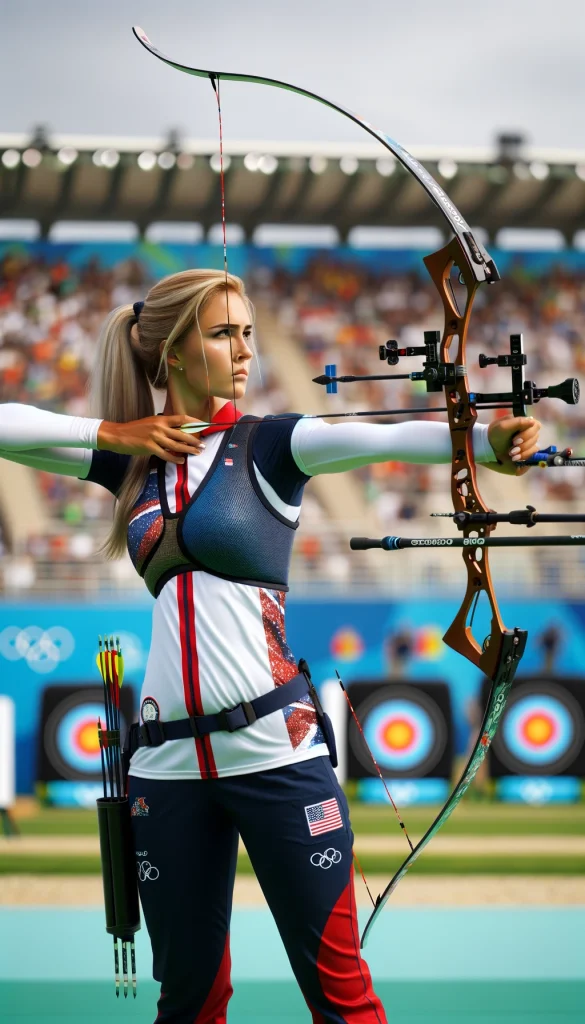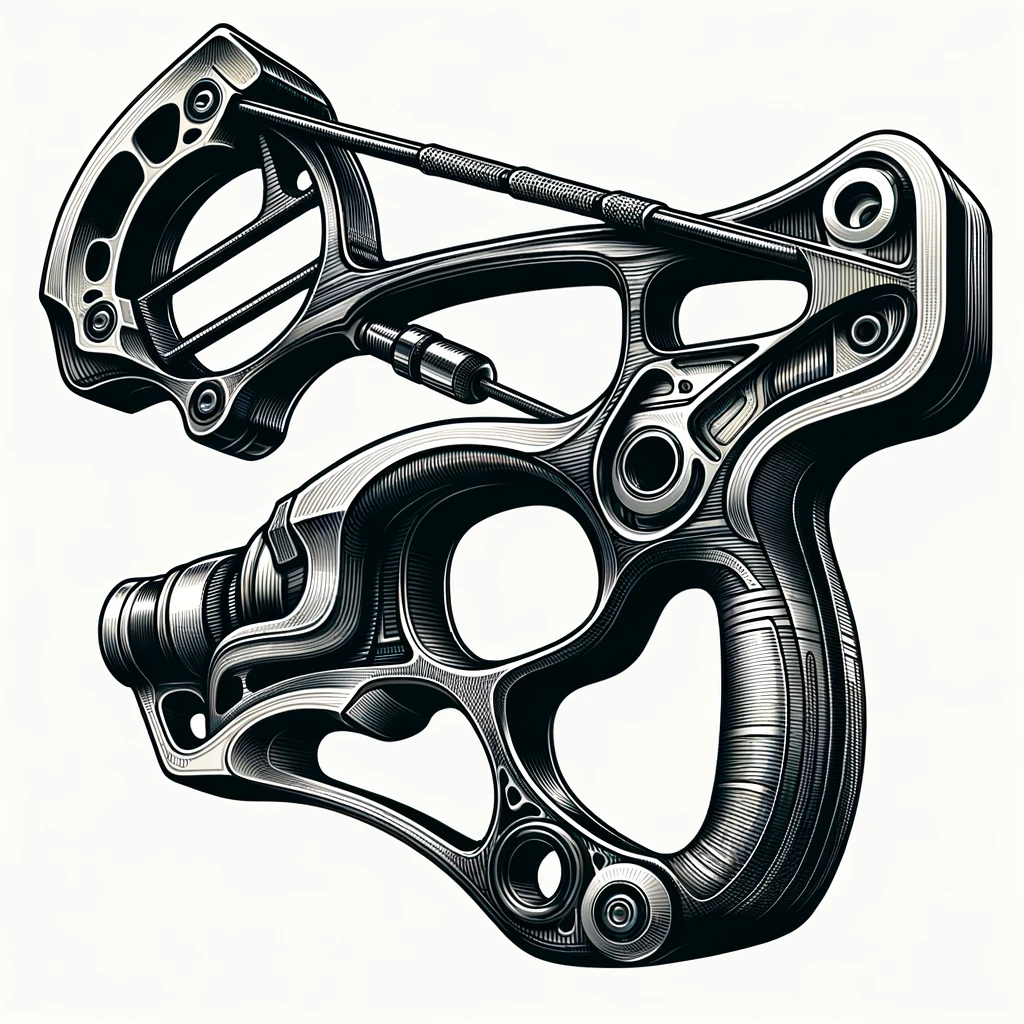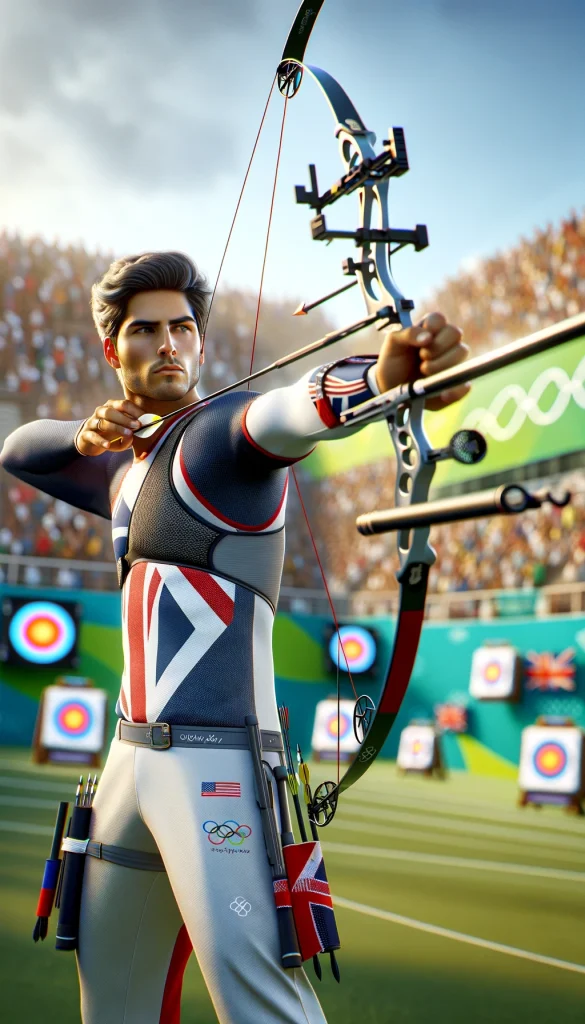
The sport of archery has evolved tremendously over the years, with modern archery equipment enhancing performance and accuracy. One such advancement is the Olympic recurve bow, which showcases a combination of style, sophistication, and skill. As a critical piece of gear for competitive archers, finding the best Olympic recurve bow is essential for those looking to improve their performance in the field.
Many factors contribute to an archer’s success, including the quality and proper selection of equipment. When it comes to Olympic recurve bows, there are numerous options available on the market, catering to different skill levels, budgets, and preferences. Some of the top bows in 2024 include the HYF Archery ILF Olympic Recurve Bow for its overall performance and the Sanlida Miracle X10 Olympic Recurve Bow for its premium features.
Regardless of the specific model chosen, it is crucial to consider factors such as materials, limb flexibility, and riser design. These elements play a vital role in the bow’s overall performance, and ultimately, the success of an archer in competitions. By carefully examining different models and understanding one’s own needs and preferences, finding the perfect Olympic recurve bow becomes a manageable task.
Overview of Olympic Recurve Bows
History and Evolution
The Olympic recurve bow has a rich history in traditional archery, with the invention of the recurve bow dating back to around 1000 BC. Over a long time, recurve bows have evolved with advancements in technology and materials, and eventually became the standard for competitive archery.
In the modern Olympics, recurve bows were introduced in the 1972 Munich Olympic Games, replacing the traditional longbow. Since then, Olympic recurve bows have become the bow of choice for most professional archers in both target archery and field archery competitions.
Understanding Olympic Recurve Bow
An Olympic recurve bow is a type of recurve bow kit specifically designed for use in target archery competitions. It consists of a riser, limbs, a bowstring, and an arrow rest. Unlike other recurve bows and compound bows, Olympic recurve bows possess unique features that help archers achieve consistent accuracy and precision at long distances adding to their total score.
Some crucial aspects of an Olympic recurve bow are:
- Balanced design: Olympic recurve bows ensure proper weight distribution to prevent torque and reduce vibration when an arrow is released.
- Adjustability: The bows offer several customization options such as tiller adjustment, brace height adjustment, and limb alignment, which enable archers to fine-tune their shooting and aiming process.
- Stabilizers: These bows often come with stabilizers that can be added or removed to help maintain stability during the shot.
Key Components of a Bow
To better understand an Olympic recurve bow, it’s essential to know its key components:
- Riser: The central part of the bow that serves as the foundation for all other components. It’s typically made of aluminum or carbon for lightweight durability.
- Limbs: Attached to the riser, these flexible parts store energy when drawn and release it when the bowstring is released.
- Bowstring: The part that connects the two limbs and is pulled back during the draw. It is commonly made from high-strength fibers like Dyneema or FastFlight.
- Arrow Rest: This component is essential for holding and guiding the arrow during the shot, as well as facilitating a consistent arrow release.
- Sight: An optional accessory that helps archers aim accurately at the target. A bow sight can be adjustable to accommodate different shooting distances.
- Stabilizers: These optional components can be added to the bow to reduce vibrations and increase stability during the shot.
Table 1: Key Components of an Olympic Recurve Bow
| Component | Purpose |
|---|---|
| Riser | Central foundation |
| Limbs | Energy storage and release |
| Bowstring | Connect limbs and enable the draw |
| Arrow Rest | Hold and guide the arrow |
| Sight | Help with aiming |
| Stabilizers | Reduce vibrations and increase stability |
In conclusion, Olympic recurve bows are specifically designed for competitive archery and consist of various unique features that promote greater accuracy and precision. Understanding their history, design, and components will help top archers choose the best bow suited for their skill level and goals.
Choosing the Right Riser

When selecting the best Olympic recurve bow, the riser plays a crucial role in overall performance and comfort. A good riser will help balance, stability, and improve peak performance. This section will guide you through factors to consider when choosing the right riser for your Olympic recurve bow.
Materials and Design
The materials used in constructing a riser can significantly influence its properties and performance. Common materials include:
- Carbon: Carbon risers are lightweight, strong, and offer excellent vibration dampening. This material’s properties will lead to a smoother shooting experience, which is particularly beneficial for competitive archers.
- Aluminum alloy: Aluminum risers are typically heavier than carbon ones, leading to increased stability. These risers are also robust and can withstand impacts and long-term use.
- Wood: Wooden risers are traditionally preferred for their classic appearance and natural feel. However, they’re not commonly used in competitive Olympic archery due to their lower performance capabilities.
When evaluating a riser’s design, factors such as grip, limb alignment systems, and overall structural integrity should be taken into consideration.
Riser Features
A riser has several essential features that can impact its performance and handling. Some key aspects to look for include:
- Grip: The grip should be comfortable, allowing for consistent hand placement and minimizing torque during the shot execution. The fit of the grip may vary between manufacturers, so testing different brands is recommended.
- Limb alignment systems: Modern risers usually come with built-in limb alignment systems, allowing for precise alignment of limbs and ensuring optimal energy transfer during a shot.
- Mass weight: Consider the riser’s mass weight in conjunction with your physical strength and skill level. A heavier riser may offer increased stability but may be more challenging to hold steady, especially for prolonged periods in competition.
Top Riser Brands
There are several well-known brands in the Olympic recurve bow market (such as Hoyt Bows) that offer high-quality risers. Here are a few top riser brands:
- Hoyt: Known for their innovative designs and cutting-edge technology, Hoyt Archery is a leading brand in world archery. They offer a wide range of risers, including carbon and aluminum options.
- Win&Win: Another notable brand, Win&Win, is well-regarded for their carbon fiber risers, which offer excellent performance and lightweight construction.
- Gillo: Gillo caters to a variety of skill levels in the Olympic recurve archery market. They are recognized for offering high-quality risers at competitive prices.
In conclusion, when choosing the right riser, consider the material, design, key features, and reputable brands. Testing various options and seeking guidance from experienced archers or coaches can also be valuable in making the best decision for your Olympic recurve bow.
Limb Selection and Performance
Limb Materials
There are several common limb materials used in Olympic recurve bows, includingwood,carbon, foam, and bamboo. Traditional wood limbs are known for their aesthetic appeal and natural feel. Carbon limbs provide high strength, durability, and speed, making them a popular choice for competitive archers. Foam and bamboo limbs offer a mix of properties: they are lightweight, resistant to temperature changes, and provide a smooth draw.
Draw Weight and Bow Size
Draw weight is an essential factor to consider for both performance and comfort. The optimal draw weight depends on the individual archer’s strength and experience level. Higher draw weights translate to increased arrow speed and flatter trajectories, enhancing accuracy. However, too high of a draw weight may lead to discomfort or fatigue, impacting an archer’s ability to maintain proper form.
Bow size also plays a crucial role in performance.
The appropriate bow sizevaries based on an archer’s size and draw length. It is essential to find the right balance between bow size and draw weight to ensure maximum comfort, stability, and precision.
Limb Compatibility
Before making any purchase, archers must ensure that their chosen limbs are compatible with their riser and other components. Most Olympic recurve bows utilize the International Limb Fitting (ILF) system, which provides a standardized connection for limbs and risers.
Some manufacturers may offer proprietary limb connections as well. Be sure to verify limb compatibility with your go-to riser and other equipment to guarantee a proper fit and optimal performance.
Essential Accessories for Recurve Bows

Using Stabilizers and Sights
Stabilizers are an important addition to your recurve bow setup as they provide balance, reduce vibration, and enhance your aiming stability. A well-selected stabilizer can significantly improve your accuracy and overall shooting experience. There are different types and lengths of stabilizers available, so you may want to experiment to find which works best for your style and bow setup. Sights play a crucial role in improving accuracy, especially in Olympic recurve archery.
They help the archer aim more consistently by providing a visual reference point. Typically, recurve bow sights consist of a horizontal bar with an adjustable sight pins that you can move up or down to modify the aim angle. Both beginners and experienced Olympic recurve archers can benefit from using target sights, although it may require some practice to get comfortable with it.
The Recurve Bow Accessories Guide offers helpful insights to choose the best sight for your needs.
Arrow Rests and Plungers
Arrow rests serve as a support for your arrow, providing a precise and consistent launching platform. There are various arrow rests available for recurve bows, ranging from simple plastic traditional rests to more advanced magnetic and adjustable rests. Selecting the right arrow rest is essential for accuracy and smooth arrow release. You can find a comprehensive list of essential recurve bow accessories, including arrow rests, at Best Recurve Bow Guide.
Plungers, also known as cushion plungers or pressure buttons, are small devices mounted on the bow riser next to the arrow rest. Their primary purpose is to minimize the effects of arrow flex and clearance issues, thus improving accuracy and consistency. Plungers exert adjustable pressure on the arrow shaft as it leaves the bow, ensuring a clean and consistent trajectory. Like arrow rests, plungers come in various styles and configurations.
Check out the Top Recurve Bow Accessories article for more information on the right plunger for your needs.
In conclusion, selecting the right accessories, such as stabilizers, sights, arrow rests, and plungers, can significantly enhance your shooting experience and improve your accuracy. Make sure to research and experiment with different gear to find the best set of accessories that match your skill level, bow setup, and shooting style.
Arrows and Accuracy
Choosing the Right Arrows
Selecting the right arrows for your Olympic recurve bow is crucial for achieving accuracy and consistent performance. Factors to consider include the arrow’s material, spine, length, and points. The archer’s draw length, shooting style, and personal preferences also affect arrow selection.
Arrow Materials
Arrows can be made from a variety of different materials such as carbon, fiberglass, and wood.
- Carbon,marrows are lightweight, fast, and consistent, making them a popular choice among Olympic archers. They offer excellent accuracy and penetration, but can be more expensive than other materials. Outdoor Arrows for Olympic Recurve provides more information on choosing the best outdoor arrows for Olympic recurve archery.
- Fiberglass arrows are durable, affordable, and suitable for both target practice and target shooting. They tend to be heavier than carbon arrows and may have lower speed and accuracy.
- Wood arrows are traditional and offer a natural feel. They are commonly used for recreational shooting and traditional archery styles, but not as much in Olympic competitions. Their performance may vary due to inconsistencies in wood density and straightness.
Impact on Performance
The choice of arrow material and design can significantly impact an archer’s performance. When selecting arrows, consider the following:
- Draw length: The arrow’s length should be appropriate for the archer’s full draw length. A proper match ensures optimal arrow flight and helps prevent clearance issues.
- Points: The type of arrow point affects the arrow’s flight, penetration, and stability. Field points are excellent for target practice, while smaller, streamlined points are suitable for competitive target shooting.
- Speed: Carbon arrows typically provide higher speeds and flatter trajectories, which can contribute to better accuracy and groupings at longer distances.
- Accuracy: Arrows with consistent spine ratings and weight tolerances are essential for achieving tight groupings and improving overall accuracy.
To achieve the best possible accuracy and performance, archers should carefully choose their arrows, taking into account materials, draw length, and set points to ensure they match their shooting style and personal preferences.
Tuning and Maintaining Your Bow
The Tuning Process
Tuning a recurve bow involves making adjustments to its various components to achieve optimal performance. The process starts by checking the bow’s center-shot, which can be tested using a walk-back test at a long-distance range. There are two main tuning methods used by experienced archers: micro tuning and bare-shaft tuning.
Here are some steps involved in tuning a recurve bow:
- Ensure the nock fits firmly on the string with a crisp, audible click.
- Check the limb alignment by using a bowstring to verify the tips, riser, and string are all in line.
- Measure and adjust the brace height to match the bow’s specifications.
Tuning a bow can be a complex process that requires patience and practice. Ashe Morgan’s guide offers valuable information on navigating the vital settings and adjustments for optimal performance.
Maintenance Tips
To keep your recurve bow in top condition, follow these simple maintenance tips:
- Regularly inspect all components: Check for cracks, damages, or loose fittings to identify potential issues before they become severe.
- Use a bowstring wax: Apply wax to the bowstring regularly to increase its lifespan and prevent premature wear.
- Store your bow properly: Use a bow case or rack to protect it from accidental damage, and store it in a dry, temperate environment to prevent warping and moisture damage.
Bowstring Care
Proper care of your bowstring is essential to maintain its strength, longevity, and performance. Here are some tips for bowstring maintenance:
- Replace worn nocking points: Replace any worn or damaged nocking points that can lead to inconsistent shooting and damage your arrows.
- Inspect and replace frayed strings: Check your bowstring for fraying or damaged strands. If you see any signs of damage, it’s time to replace the string.
- Unstring the bow when not in use: Using a bow stringer to remove tension from the limbs helps increase the bow’s lifespan and protect the string.
By following these guidelines, you can ensure that your Olympic recurve bow stays in peak condition, leading to better performance and longevity.
Top Picks and Recommendations
Best Entry-Level Recurve Bow Packages
For beginners who are looking to venture into the world of archery, several affordable yet high-quality traditional bows are available on the market. Among these, theSamick Sage stands out, offering durability and performance at an accessible price. Similarly, the SAS Spirit is another excellent choice for those seeking an entry-level first bow, thanks to its user-friendly design and reasonable cost.
Best Choice Bows for Target Archery
Target archery requires precision, and several recurve bow models cater specifically to this need. The Hoyt Satori is a top pick for target shooting, boasting exceptional balance and an adjustable brace height for optimal tuning. Additionally, the PSE Pro Max is another option offering a high-quality riser, custom limbs, and abundant tuning options.
For those focusing on Olympic-style competitions, the Sanlida Miracle X10 Olympic Recurve Bow is a premium choice, offering advanced features and top-notch performance to help propel athletes to victory.
Noteworthy Brands
Several established brands offer a range of recurve bows to cater to different skill levels, preferences, and budgets. Among these, Bear Archery produces high-quality bows for various disciplines, including target archery and hunting. The Bear Archery Grizzly and the Bear Archery Fred Bear Takedown are two popular models suitable for hunting, while the Bear Archery Super Kodiak Recurve caters more towards traditional compound archers.
PSE is another reputable brand within the archery world, manufacturing recurve bows suitable for both entry-level archers and professional Olympic athletes. The PSE Pro Max, for example, is suitable for intermediate to advanced archers looking to improve their accuracy in target shooting.
Lastly, Western Archery shop offers reliable bows for those new to the sport. Their The Edge recurve bow presents an ideal choice for beginners, with a durable construction and comfortable grip designed to help ease the transition into archery.
